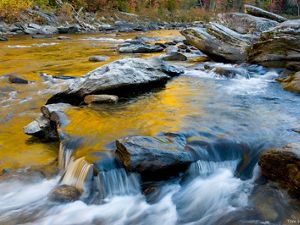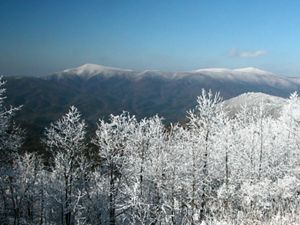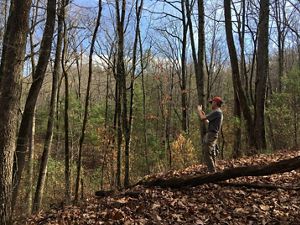Three headwaters, three distinct geographical areas flowing through three states.
Unique among the nation’s river basins, the Upper Coosa consists of three headwater rivers, the Conasauga, Coosawattee and Etowah, dozens of tributaries and all the land drained by these waters.
It encompasses three distinct geographical areas: Blue Ridge Mountains, Ridge and Valley, and Piedmont.
The Upper Coosa River Basin crosses north central Georgia, southeastern Tennessee and northeast Alabama passing through agricultural, industrial, rural and densely populated areas. The Nature Conservancy is working with key stakeholders to protect, preserve and restore this important river basin.
The Upper Coosa River Basin begins as small springs in the Cohutta Mountains and in the Blue Ridge Mountains of north-central Georgia flowing through some of the most picturesque and iconic landscapes of the north Georgia mountains. The Oostanaula, which is formed by the confluence of the Conasauga and Coosawattee, joins the Etowah in downtown Rome, Georgia, about an hour northwest from metro Atlanta.
As it winds through such varied geographic areas as mountains, valleys and piedmont, it’s not surprising that this river basin supports the highest percentage of native species of any other basin in North America. Its waters are used in farming and industry, and are also a recreational paradise, offering prized game fishing, boating and swimming.
Nearly 20 counties in northwest Georgia lay within the river basin, and others in Alabama and Tennessee, all benefitting from the river and its many tributaries. One area most dependent on the river isn’t even within the basin’s boundaries. Metropolitan Atlanta relies on the Upper Coosa River Basin to provide some of its fresh, clean drinking water.
Despite our dependence on the waters of the Upper Coosa River Basin, manmade forces are altering the lands and waters of the area. Factors such as air pollution, industrial water use and incompatible farming practices are combing with increased population and development, putting pressure on the river, its tributaries and the myriad life it supports.
Some of these manmade changes may seem small at first, almost inconsequential. But even the smallest disturbance on a rural tributary has a cascading effect, like the eroding power of a waterfall on the rocks beneath it. The decline in a diminutive fish species like darters, for example, does not bode well for other species farther along the food chain, like Georgia’s trout population, the prize of game fishermen nationwide.
But partners throughout the basin’s reach are working together, through land acquisition, protection agreements and diverse management practices. With The Nature Conservancy’s help, partners are shifting engineering practices away from stormwater ponds to infiltration practices that mimic natural hydrology and trying new ways to filter nutrients and pesticides from agriculture and drainage ditches before they enter the water. It’s our way of ensuring the river is there for us to enjoy today and for all those who follow.



